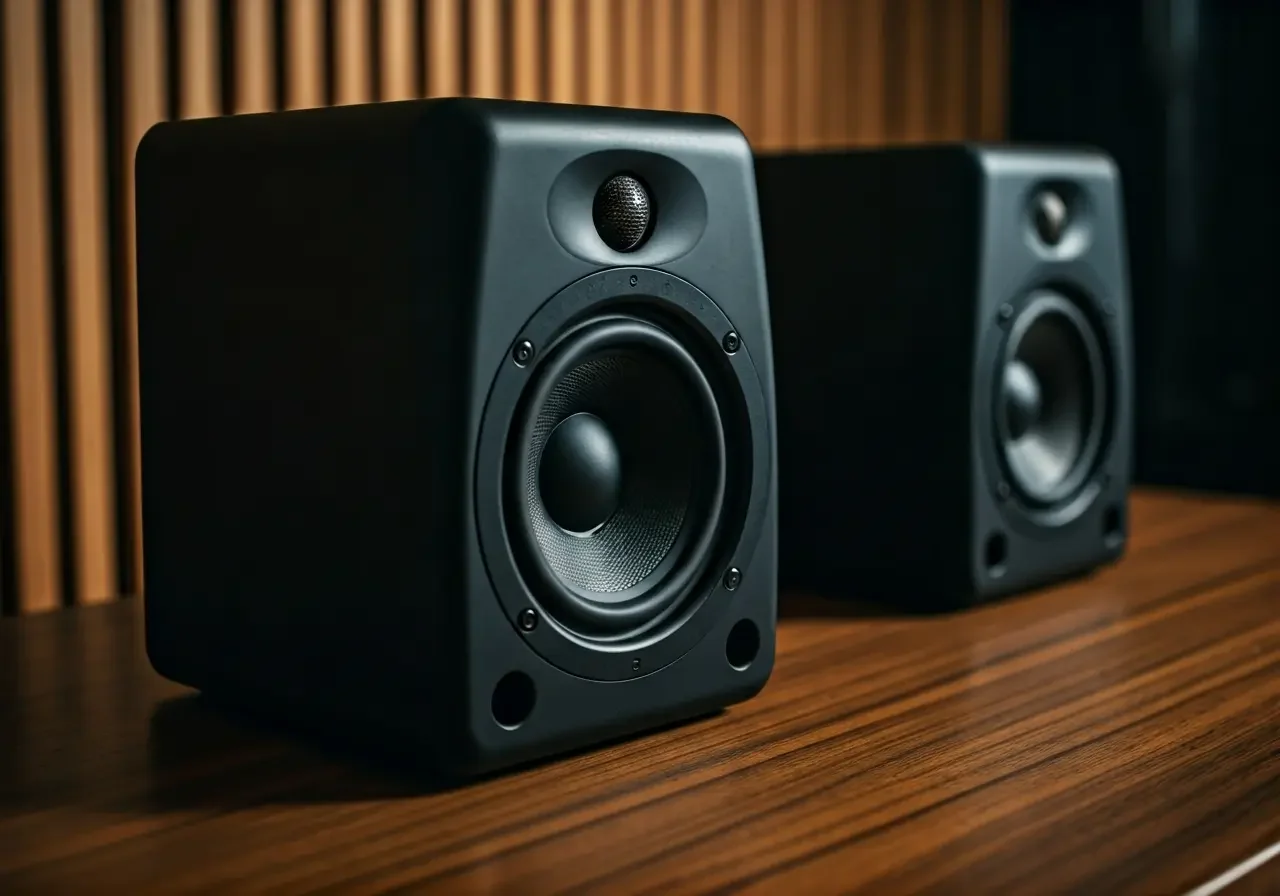10 Things You Need to Know About Focal Studio Monitors
Focal studio monitors are a staple in the professional audio world, renowned for their exceptional sound quality and precision. If you're diving into the world of music production, or even if you're a seasoned audio engineer, understanding what makes these monitors special is crucial. In this guide, we'll walk you through everything you need to know about Focal studio monitors, from their unique features to useful setup tips. Let's get started!
1. Understanding Focal's Reputation in the Audio World
Focal has a long-standing history in the audio industry. Known for their meticulous attention to detail and superior engineering, they have carved a niche in high-end audio gear. Their monitors are widely praised in studios around the globe for their reliability and performance.
One of the main reasons Focal stands out is their commitment to innovation. With a strong R&D department, they continuously push the boundaries of audio technology. This dedication to progress ensures that their products keep up with the evolving needs of audio professionals.
Another factor contributing to Focal's esteemed reputation is their use of high-quality materials. From their meticulously crafted cabinets to their precision drivers, each component is chosen to deliver optimal sound reproduction. Such attention to detail ensures that their monitors produce audio that is both accurate and pleasing to the ear.
2. Key Features of Focal Studio Monitors
Focal studio monitors feature a unique inverted dome tweeter, which provides precise sound dispersion and contributes to the unmatched clarity they are known for. This design effectively reduces distortion and allows for a more accurate reproduction of high frequencies, making them ideal for critical listening environments.
In addition to their tweeter technology, Focal monitors incorporate advanced bass driver technology. The use of custom-designed drivers ensures that low frequencies are tight and controlled, providing a strong foundation for music production across various genres. This technology results in a well-balanced sound that faithfully reproduces complex audio signals.
Focal's emphasis on superior cabinet construction is another hallmark. By utilizing materials that minimize resonance, their monitors deliver a more accurate soundstage. This is crucial for mixing and mastering, where every detail counts. Optimal cabinet design enhances the overall listening experience, ensuring that the sound remains faithful to the source material.
3. Why Sound Accuracy Matters
In any studio environment, accuracy is paramount. Focal studio monitors offer flat frequency responses, meaning the sound reproduction is faithful and uncolored, allowing producers to make better-informed mixing decisions.
Accurate monitors enable producers to hear the true mix. This allows for the identification of even minor errors, such as frequency imbalances or phase issues. Ultimately, having a clear and honest representation of the audio leads to better final products that translate well across different playback systems.
4. Choosing the Right Focal Model for Your Studio
With several models in the Focal lineup, selecting the right one can be daunting. Consider your studio size, budget, and audio needs to choose a monitor that fits your specific requirements and space constraints.
For smaller studios, the Focal Shape series might be a great fit, offering compact designs without sacrificing sound quality. Larger studios, on the other hand, may benefit from the power and clarity of the Focal Solo6 Be or Twin6 Be models. It's essential to assess your space and production needs to ensure you invest in a monitor that complements your workflow.
5. Setting Up Your Focal Studio Monitors for Optimal Use
Proper setup is vital for maximizing the performance of your monitors. Learn about positioning, room acoustics, and calibration techniques that allow your Focal studio monitors to deliver their best possible output.
Begin by positioning your monitors at ear level, forming an equilateral triangle with the listening position. This ensures that sound reaches you directly, without interference. Additionally, invest in acoustic treatment for your room to mitigate reflections and standing waves. Effective room treatment can significantly enhance the accuracy of your monitors, leading to better mixing decisions.
Calibration is equally crucial. Use software tools and calibration mics to optimize your monitors' output within your specific environment. By adjusting the EQ and level settings, you can tailor their performance to suit your acoustic space. Proper calibration ensures that what you hear is what is truly being played back.
6. Caring for Your Focal Monitors
Regular maintenance ensures longevity and consistent performance. Discover tips on cleaning, handling, and caring for your Focal monitors to keep them in top condition for years to come.
To maintain your Focal monitors, start by routinely dusting them with a soft, dry cloth to prevent build-up on sensitive components. Avoid using cleaning agents that might damage their surfaces. Additionally, ensure they are in a stable, vibration-free position to prevent unnecessary wear over time.
When handling your monitors, always use both hands to move them, avoiding direct contact with the driver components. If you're relocating your studio, transport the monitors in their original packaging to prevent damage during transit. Taking these precautions can significantly extend the life of your equipment.
7. Understanding the Importance of Room Acoustics
The interplay between your monitors and room acoustics greatly affects audio quality. We explore how treatment such as diffusers and absorbers can enhance sound fidelity and accuracy when using Focal monitors.
Diffusers help disperse sound waves, reducing echoes and offering a cleaner sound profile. This can be particularly beneficial in smaller rooms, where standing waves can dramatically color the audio. Absorbers, on the other hand, help to dampen excess sound energy, allowing for a more controlled acoustic environment.
To truly harness the power of Focal monitors, it's recommended to invest in room measurements and professional acoustic treatment. These steps not only enhance your listening environment but also ensure that the sound from your monitors is as accurate as possible, enhancing the overall quality of your audio projects.
8. Using Focal Monitors in Different Genres
Focal monitors are versatile across various music genres. Whether you’re working with classical, rock, or electronic, understanding their adaptability can help you achieve optimal results tailored to your specific audio projects.
For classical music, where clarity and detail are paramount, Focal's precision tweeter technology reproduces intricate harmonic content exquisitely. Rock musicians will appreciate the powerful and controlled low-end, essential for driving bass lines and drum patterns. Meanwhile, electronic producers can rely on the monitors' flat response to hear every synthesized nuance and texture accurately.
9. Troubleshooting Common Monitor Issues
Encountering issues with your studio monitors? We address some common problems and solutions, ensuring you have guidance to troubleshoot potential audio glitches with your Focal monitors.
Issues such as buzzing can often be traced back to cable or electrical interference. Ensure all connections are secure and consider using balanced cables to minimize noise. If distortion occurs, check your gain stages across the audio chain, ensuring levels aren't excessively high.
10. Integrating Focal Monitors Into Your Workflow
Discover how to seamlessly integrate these monitors into your existing studio setup. Tips on connectivity, software compatibility, and how they fit into your workflow can help streamline your production process.
When connecting Focal monitors, it's essential to utilize high-quality audio interfaces and cables to maintain their sonic integrity. Many audio interfaces offer digital and analog connectivity options, allowing you to choose what best suits your setup. Software compatibility is also a non-issue, as these monitors are designed to work well with all major digital audio workstations.

